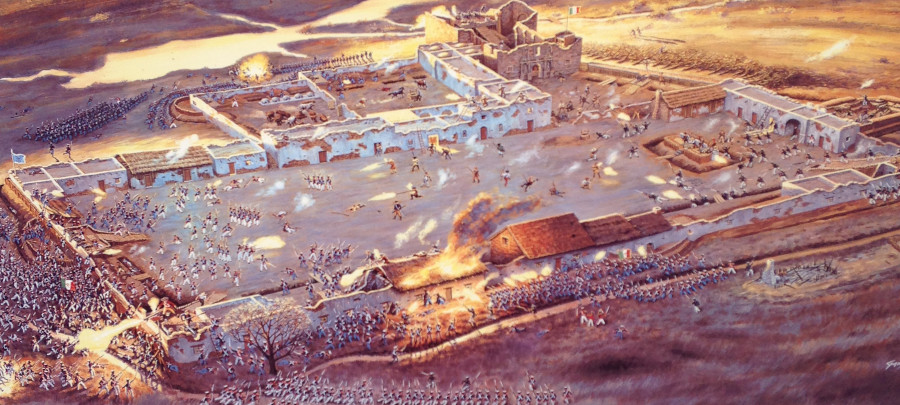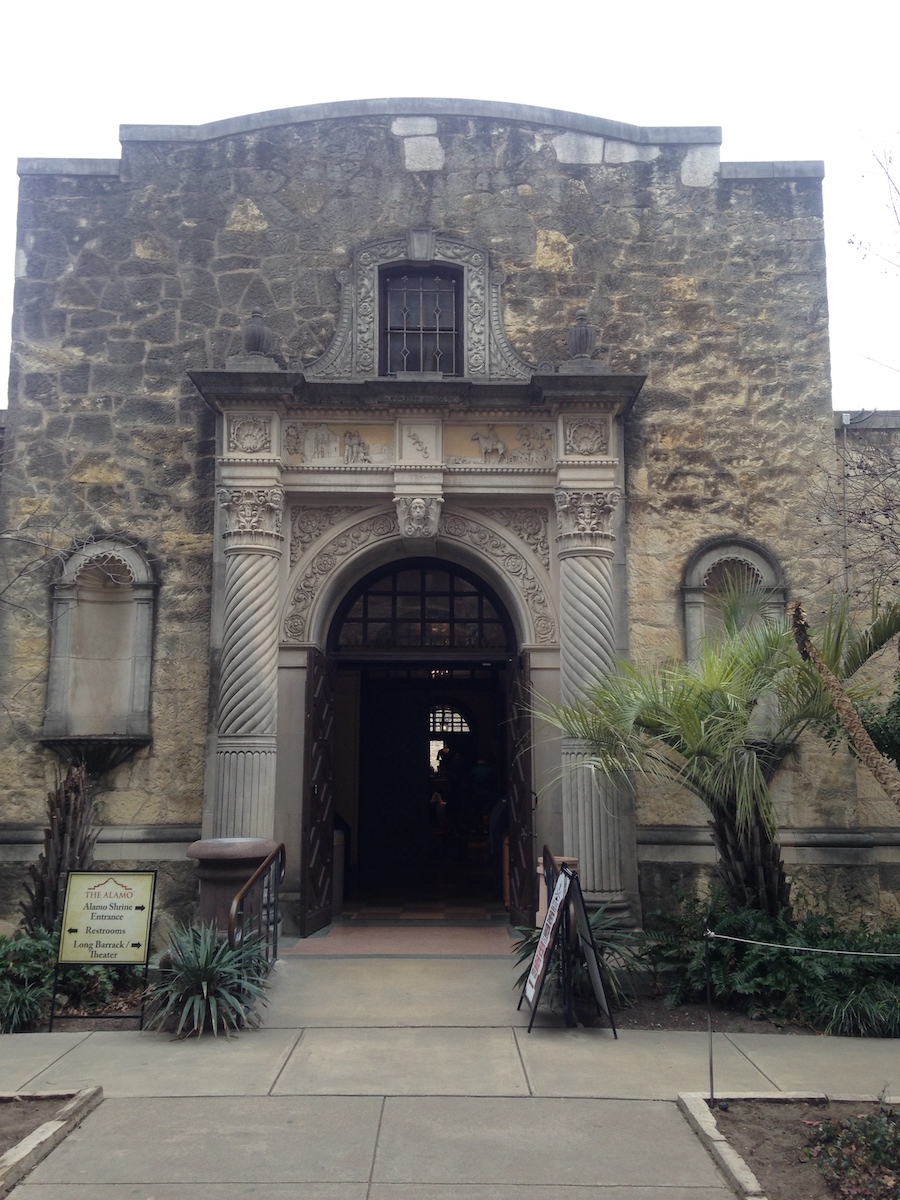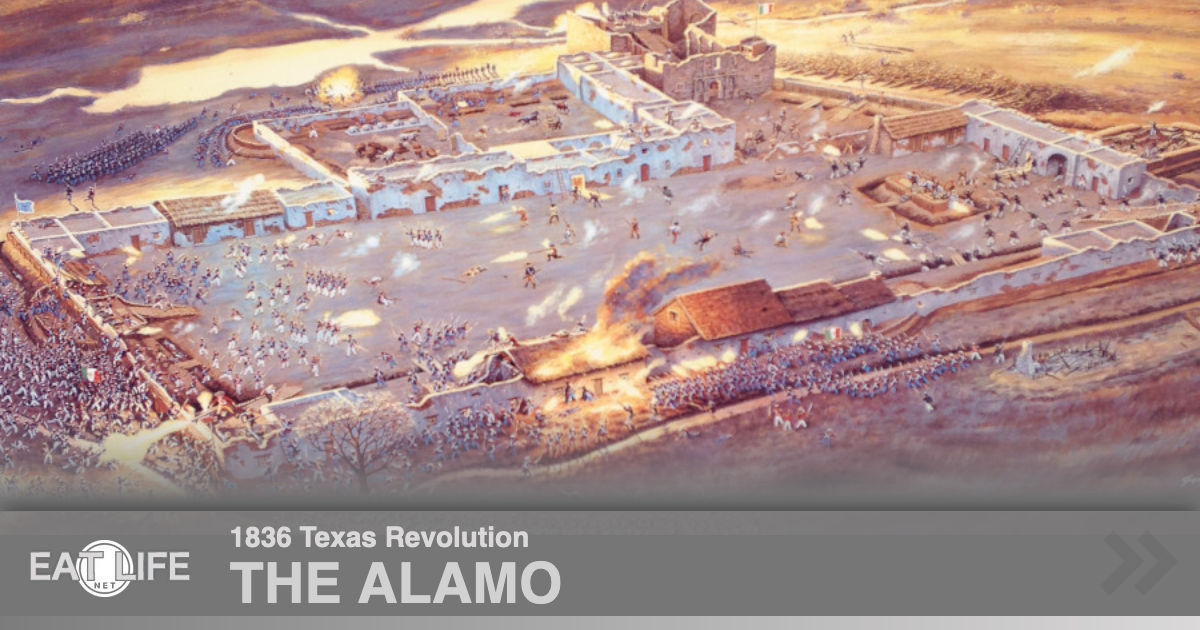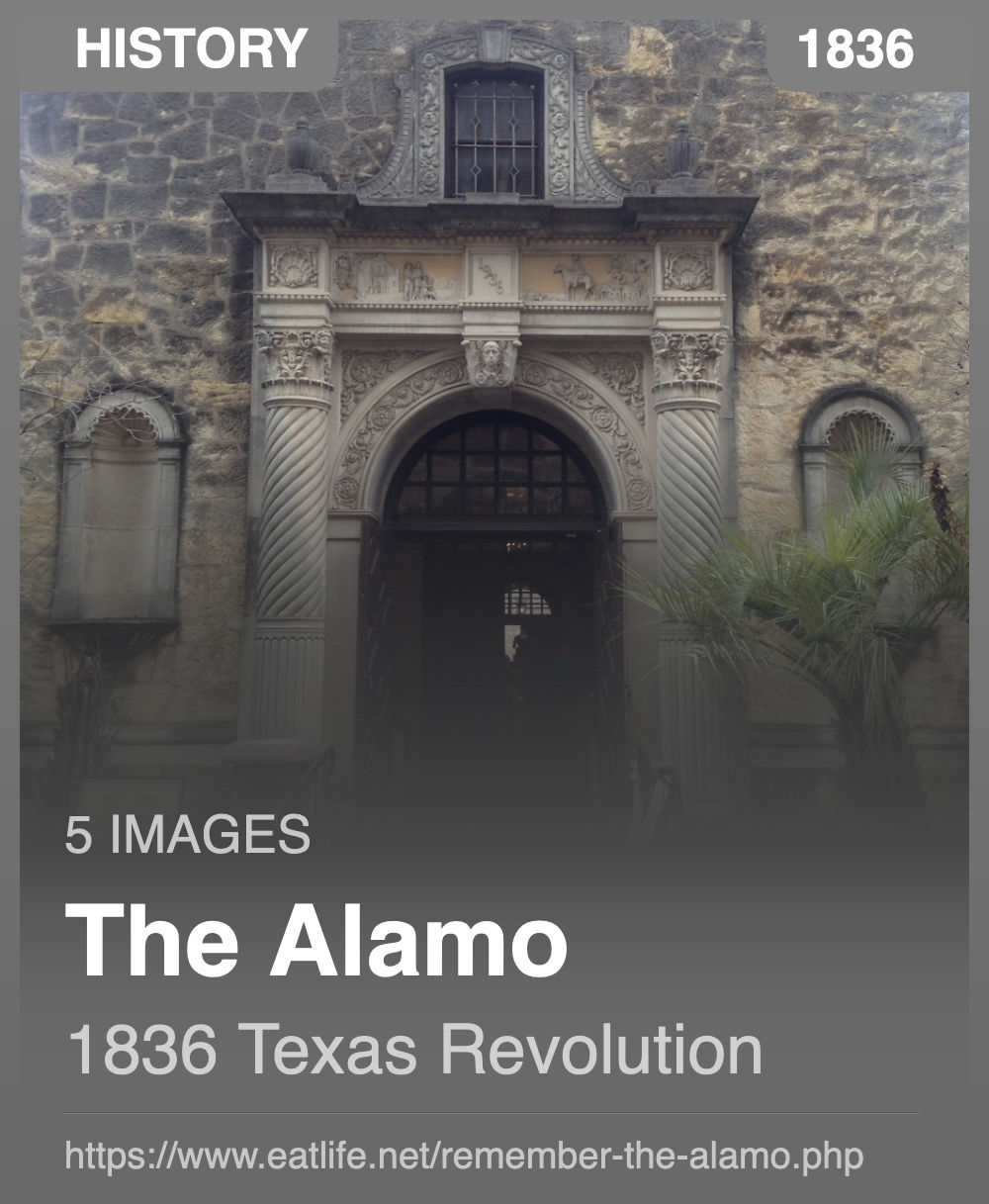Remember the Alamo!
Founded in 1718 as the first mission in San Antonio, the Alamo served as a way station between East Texas and Mexico. In 1836, decades after the mission had closed, approximately 200 Texan defenders held the Alamo from over 2,500 of General Santa Anna's troops from Mexico. For 13 days in 1836, close to 200 Texas defenders held the Alamo from approximately 2,500 of General Santa Anna's troops from Mexico. The most famous of the defenders, William B. Travis, James Bowie, and David Crockett, died fighting overwhelming odds for freedom. "Remember the Alamo!" became a rallying cry for Texans fighting for independence during the Texas Revolution.

The Battle of the Alamo (February 23 - March 6, 1836) was a pivotal event in the Texas Revolution from Mexico.

The Battle of the Alamo during Texas' war for independence from Mexico lasted thirteen days, from February 23, 1836 - March 6, 1836. In December of 1835, a group of Texan volunteer soldiers had occupied the Alamo, a former Franciscan mission located near the present-day city of San Antonio.
Sam Houston, the newly appointed commander-in-chief of the Texan forces, argued that San Antonio should be abandoned due to insufficient troop numbers, the Alamo's defenders, led by Colonel James Bowie and Lieutenant Colonel William B. Travis, dug in nonetheless and prepared to defend the fort to the last. These defenders, who despite later reinforcements never numbered more than 200, included Davy Crockett, the famous frontiersman and former congressman from Tennessee, who had arrived in early February.On February 23, a Mexican force numbering in the thousands and led by General Antonio Lopez de Santa Anna began a siege of the fort. According to various estimates somewhere between 1,800 and 6,000 men. Though vastly outnumbered, the Alamo's 200 defenders, commanded by James Bowie and William Travis and including the famed frontiersman Davy Crockett, held out for 13 days before the Mexican forces finally overpowered them.
Santa Anna ordered his men to take no prisoners, and only a small handful of the Texans were spared.
The Mexican forces also suffered heavy casualties in the Battle of the Alamo, losing between 600 and 1,600 men.For Texans, the Battle of the Alamo became an enduring symbol of their resistance to oppression and their struggle for independence, which they won later that year. The battle cry of "remember the Alamo" later became popular during the Mexican-American War of 1846-1848.
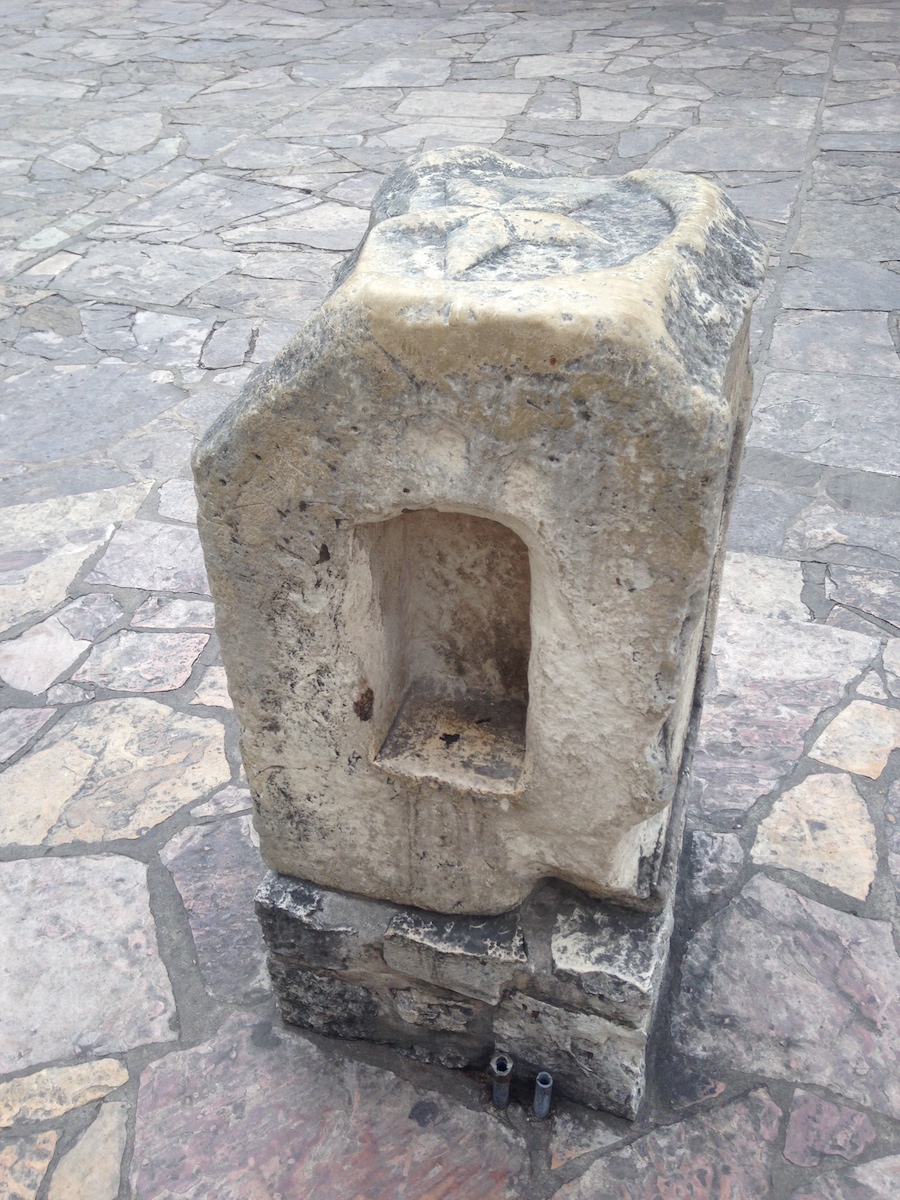
- Texians had driven all Mexican troops out of Mexican Texas.
- About 100 Texians were then garrisoned at the Alamo.
- The Texian force grew slightly with the arrival of reinforcements led by eventual Alamo co-commanders James Bowie and William B. Travis.
- On February 23, approximately 1,500 Mexicans marched into San Antonio de Bexar as the first step in a campaign to retake Texas.
- For the next 10 days, the two armies engaged in several skirmishes with minimal casualties.
Aware that his garrison could not withstand an attack by such a large force, Travis wrote multiple letters pleading for more men and supplies from Texas and from the United States, but the Texians were reinforced by fewer than 100 men because the United States had a treaty with Mexico, and supplying men and weapons would have been an overt act of war.
- In the early morning hours of March 6, the Mexican Army advanced on the Alamo. After repelling two attacks, the Texians were unable to fend off a third attack.
- As Mexican soldiers scaled the walls, most of the Texian fighters withdrew into interior buildings. Occupiers unable to reach these points were slain by the Mexican cavalry as they attempted to escape.
- Following the 13-day siege, Mexican troops under President General Antonio Lopez de Santa Anna reclaimed the Alamo Mission near San Antonio de Bexar (modern-day San Antonio, Texas, United States), killing most of the Texians and Tejanos inside.
Santa Anna's cruelty during the battle inspired many Texians and Tejanos to join the Texian Army.
- Several noncombatants were sent to Gonzales to spread word of the Texian defeat. The news sparked both a strong rush to join the Texian army and a panic, known as 'The Runaway Scrape', in which the Texian army, most settlers, and the new, self-proclaimed but officially unrecognized, Republic of Texas government fled eastward toward the United States ahead of the advancing Mexican Army.
- Buoyed by a desire for revenge, the Texians defeated the Mexican Army at the Battle of San Jacinto, on April 21, 1836, ending the rebellion in favor of the newly-formed Republic of Texas.
- Within Mexico, the battle has often been overshadowed by events from the Mexican–American War of 1846–48.
- In 19th-century Texas, the Alamo complex gradually became known as a battle site rather than a former mission.
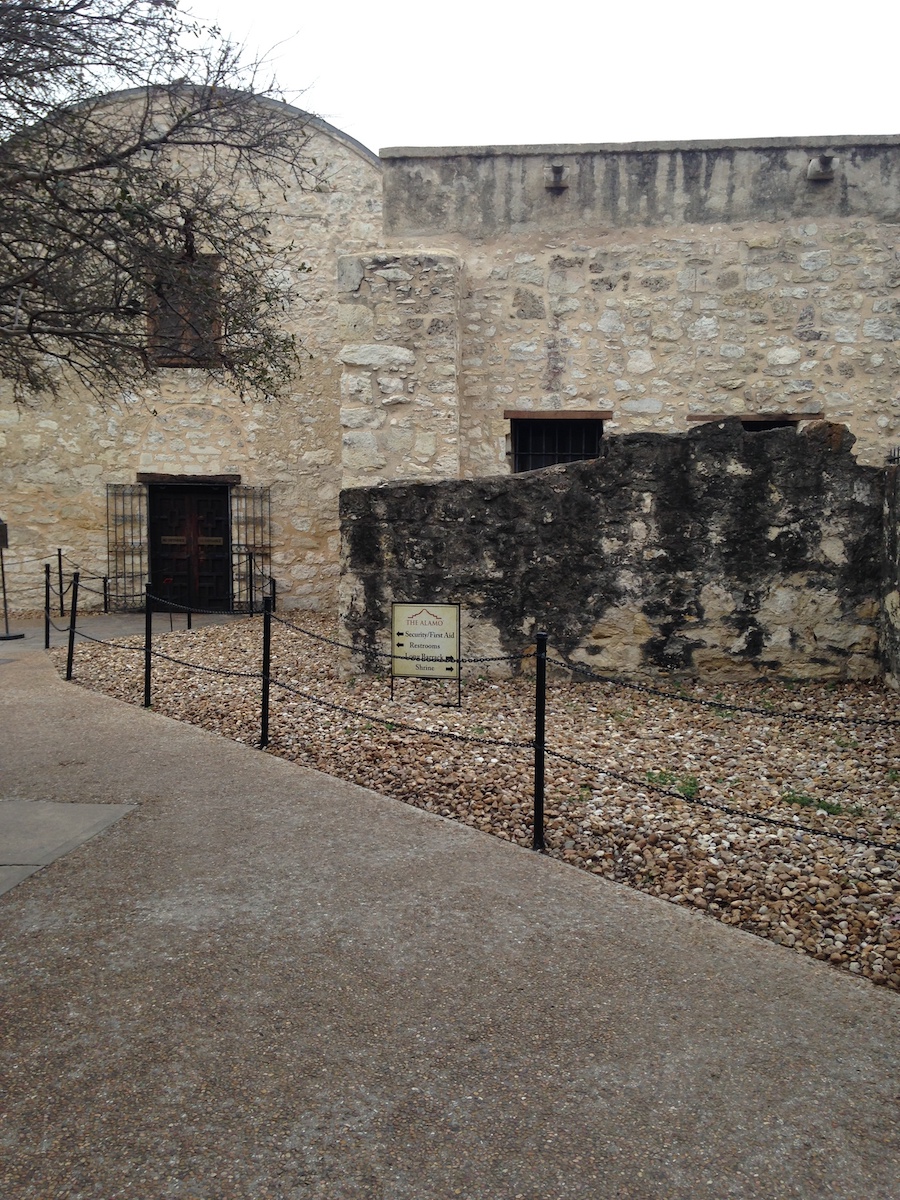
- Originally known as the Mission San Antonio de Valero
- Founded in the 18th century by Roman Catholic missionaries in what is now San Antonio, Texas
- It was the site of the Battle of the Alamo in 1836, where American folk heroes James Bowie and Davy Crockett died.
- Today it is a museum
- Built for the education of local American Indians after their conversion to Christianity.
- The mission became non-religious in 1793 and then abandoned.
- Ten years later, it became a fortress housing the Second Flying Company of San Carlos de Parras military unit, who likely gave the mission the name Alamo.
- During the Texas Revolution, Mexican General Martin Perfecto de Cos surrendered the fort to the Texian Army in December 1835, following the Siege of Bexar.
- A relatively small number of Texian soldiers then occupied the compound for several months.
- The defenders were wiped out at the Battle of the Alamo on March 6, 1836.
- As the Mexican Army retreated from Texas several months later, they tore down many of the Alamo walls and burned some of the buildings.
- For the next five years, the Alamo was periodically used to garrison soldiers, both Texian and Mexican, but was ultimately abandoned.
- In 1849, several years after Texas was annexed to the United States, the U.S. Army began renting the facility for use as a quartermaster's depot, before again abandoning the mission in 1876 after nearby Fort Sam Houston was established.
The Alamo chapel was sold to the state of Texas, which conducted occasional tours but made no effort to restore it. The remaining buildings were sold to a mercantile company that operated them as a wholesale grocery store.
- The Daughters of the Republic of Texas formed in 1895 and began trying to preserve the Alamo.
- 1905 the state legislature purchased the remaining buildings and to named the Daughters of the Republic of Texas the permanent custodian of the site.
- Over the next century, periodic attempts were made to transfer control of the Alamo from the DRT.
- In early 2015, Texas Land Commissioner officially removed control of the Alamo and gave it to the Texas General Land Office. The Alamo and the four missions in the San Antonio Missions National Historical Park were designated a UNESCO World Heritage Site on July 5, 2015.
The Alamo gets over four million visitors each year, making it one of the most popular historic sites in the United States.
